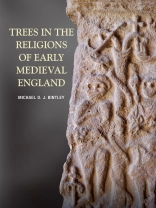Trees were of fundamental importance in Anglo-Saxon material culture – but they were also a powerful presence in Anglo-Saxon religion before and after the introduction of Christianity. This book shows that they remained prominentin early English Christianity, and indeed that they may have played a crucial role in mediating the transition between ancient beliefs and the new faith. It argues that certain characteristics of sacred trees in England can be determined from insular contexts alone, independent of comparative evidence from culturally related peoples. This nevertheless suggests the existence of traditions comparable to those found in Scandinavia and Germany. Tree symbolismhelped early English Christians to understand how the beliefs of their ancestors about trees, posts, and pillars paralleled the appearance of similar objects in the Old Testament. In this way, the religious symbols of their forebears were aligned with precursors to the cross in Scripture. Literary evidence from England and Scandinavia similarly indicates a shared tradition of associations between the bodies of humans, trees, and other plant-life. Though potentially ancient, these ideas flourished amongst the abundance of vegetative symbolism found in the Christian tradition.
Michael Bintley is Senior Lecturer in Medieval Literature at Canterbury Christ Church University.
Table of Content
Introduction – Michael D.J. Bintley
Holy Trees and Inculturation in the Conversion Period – Michael D.J. Bintley
Anglo-Saxon Holy Trees and their Northern European Counterparts – Michael D.J. Bintley
Rewriting the Holy Rood in Anglo-Saxon Spiritual History – Michael D.J. Bintley
The Human Forest: People and Trees in Early Medieval England and Scandinavia – Michael D.J. Bintley
Conclusions – Michael D.J. Bintley
Bibliography – Michael D.J. Bintley
About the author
MICHAEL D. J. BINTLEY Lecturer in Early Medieval Literature and Culture at Birkbeck, University of London. Graduated from UCL.












